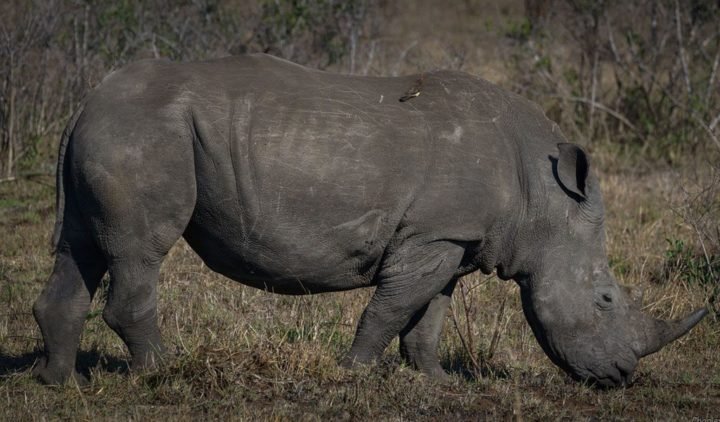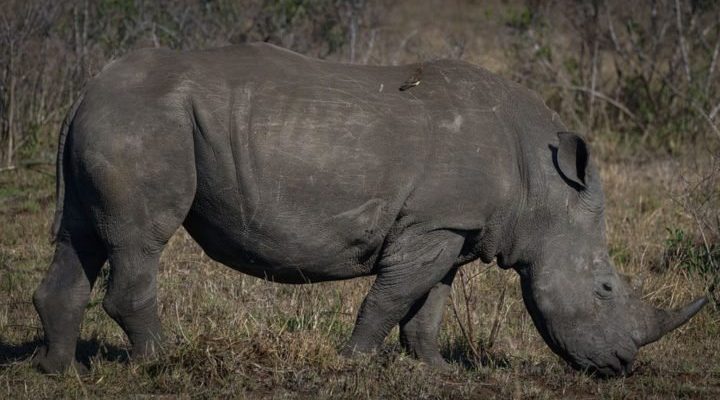
These rhinos are primarily herbivores, and their feeding habits reveal a lot about their environment. Just like how a chef picks the freshest ingredients for a dish, the Indian rhino selects plants that not only nourish them but also help them thrive within their ecosystem. So, let’s dive into the fascinating world of what Indian rhinos eat and how they hunt for their food!
Understanding the Indian Rhinoceros’ Diet
The Indian rhinoceros is a grazer, which means it feeds primarily on grasses. In fact, about 90% of their diet consists of various types of grass. Think of it like a buffet; they’ll go for the dishes that suit their taste! They love eating tall grass found in the floodplains and grasslands of their habitat, especially during the monsoon season when the grass is lush and abundant.
Apart from grass, these rhinos enjoy munching on leaves, fruits, and even some shoots. They can sometimes be seen browsing on bushes and trees, particularly in areas where the grass is less plentiful. This varied diet helps them get essential nutrients and energy. Here’s a breakdown of their preferred foods:
- Grasses: Their primary choice, especially varieties like elephant grass.
- Leaves: They won’t shy away from leafy greens.
- Fruits: They occasionally munch on seasonal fruits.
- Shoots: Tender new growth is also on their menu.
You might be wondering how they find all this food. Well, Indian rhinos are very strategic about foraging. They’ll often move to different areas depending on what food is available. This behavior is part of their adaptation to changing seasons and wet or dry conditions.
Hunting Strategies of the Indian Rhinoceros
While you might think of “hunting” as a predatory act, for the Indian rhinoceros, it’s more about foraging and using their size and strength to access food. Unlike carnivorous animals that actively chase after prey, these rhinos employ different techniques to gather their meals.
One of the most fascinating strategies is their ability to use their large, strong lips to grasp and pull grass. It’s almost like how we might use our hands to pick up something we want! They are incredibly agile with their lips, allowing them to strip leaves from branches with ease. This adaptability allows them to thrive in their habitats, especially when resources like grass might become scarce.
In addition to their physical abilities, Indian rhinos also rely on their sense of smell to locate food. Just like how a delicious aroma can lead you to the best dish at the buffet, these rhinos can detect plants from a distance. Their sense of smell helps them navigate through dense vegetation to find the tastiest morsels.
The Importance of Seasonal Changes
Seasons play a crucial role in the diet of the Indian rhinoceros. During the monsoon season, for instance, the lushness of the grass increases significantly. The rivers overflow, and fields become verdant—making it paradise for these gentle giants. They can eat their fill and store energy for the dryer months ahead.
On the flip side, during the dry season, food can become scarce. In these months, rhinos might be forced to travel longer distances to find suitable forage. They adapt by shifting their diet slightly, munching more on browse, which consists of leaves and branches of shrubs and trees. This shift underscores their resilience and ability to thrive in changing environments.
Addressing their nutritional needs is vital for maintaining their health. Just like how we need a balanced diet, Indian rhinos require a mix of grasses and foliage to keep them strong and fit. It’s interesting to think that their survival hinges not just on what they eat, but also on how they adapt to their surroundings throughout the seasons.
Threats to Their Diet and Hunting Grounds
Unfortunately, the Indian rhinoceros faces several threats that impact their diet and hunting strategies. One major concern is habitat loss due to human activities. Just like a favorite restaurant shutting down, when their natural habitat vanishes, it limits their access to food. Urban development, agriculture, and poaching have encroached upon their territories, diminishing the grasslands and forests they depend on.
Additionally, climate change poses a growing threat to their food sources. Changes in weather patterns can affect the growth of grass and other vegetation. Drastic shifts in rainfall and temperature can lead to drought conditions, limiting the availability of their preferred foods. It’s a bit like a chef who suddenly can’t find the ingredients they need to make a dish!
Conservation efforts are critical to ensure that these magnificent creatures can continue to thrive. This includes protecting their habitats and implementing strategies to mitigate the impacts of climate change. By preserving their environments, we help ensure that Indian rhinos can continue to graze and browse in the wild.
Conservation Efforts and Their Impact
There are many organizations and initiatives dedicated to the conservation of Indian rhinoceroses. Through protected areas and national parks, like Kaziranga National Park in Assam, India, authorities focus on safeguarding these animals and their habitats. These parks not only provide a safe haven for rhinos but also help restore their food sources.
Community engagement plays a significant role in these conservation efforts. Local people are often involved in protecting their lands and understanding the importance of biodiversity. When communities thrive alongside conservation initiatives, both people and wildlife benefit. It’s like a team working together to achieve a common goal.
Moreover, anti-poaching efforts have ramped up in recent years. Since rhinos are often targeted for their horns, stricter regulations and increased patrolling in protected areas help deter poaching. This allows rhinos to live longer, healthier lives, roaming freely in their natural environments and continuing their essential role in the ecosystem.
The Role of Indian Rhinos in Their Ecosystem
Besides their unique feeding habits, Indian rhinos also play a vital role in their ecosystem. As herbivores, they help maintain the balance of the environments they inhabit. By grazing on grasses, they promote growth and encourage biodiversity. Their feeding habits can also help shape the landscape, creating areas that allow other plant species to flourish.
Think of them as gardeners of the forest! Just as a gardener trims plants to promote healthy growth, Indian rhinos help manage plant communities. This not only benefits other wildlife by creating diverse habitats but also supports the overall health of the ecosystem.
Additionally, their dung is a vital resource for various plant species. Rhinos spread seeds through their droppings, which contributes to forest regeneration. So, when we think about the Indian rhinoceros, it’s clear they play an irreplaceable part in their ecosystem that goes beyond just their presence.
In wrapping up our exploration of the Indian rhinoceros, it’s clear that these magnificent creatures are more than just their imposing size. Their diet and foraging strategies reflect a deep connection to their ecosystems. They’ve adapted to their environments beautifully, using their unique capabilities to forage for food while facing significant threats from habitat loss and climate change.
Through conservation efforts, we can help ensure that these incredible animals continue to thrive in the wild. By protecting their natural habitats and addressing the challenges they face, we contribute to the survival of not only the Indian rhino but the entire ecosystem. So, the next time you think about these gentle giants, remember their important role in nature and the efforts needed to safeguard their future.

